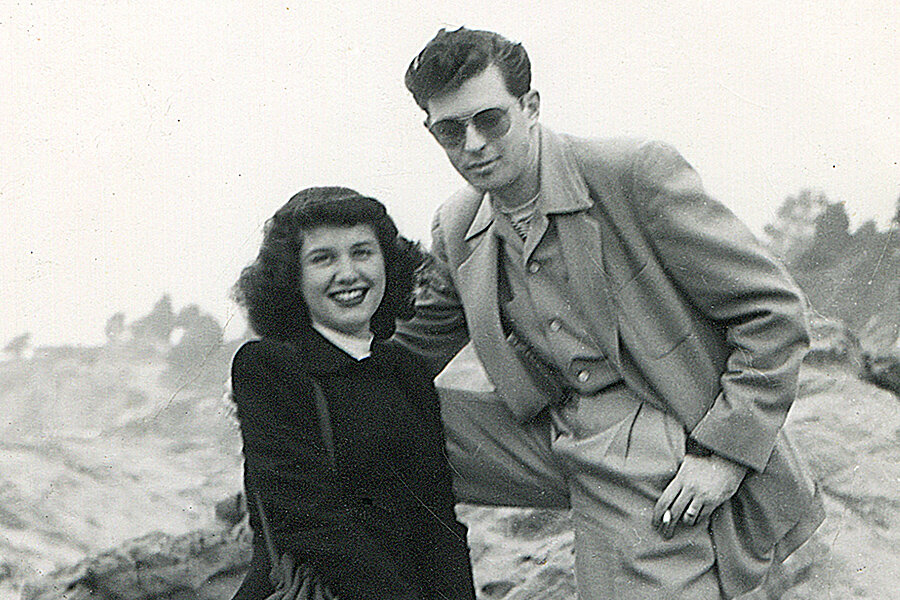'Harold and Lillian: A Hollywood Love Story' revives story of little-known movie couple
Loading...
Hollywood marriages can be as evanescent as the life span of mayflies. For this reason alone, it’s nice to see Daniel Raim’s “Harold and Lillian: A Hollywood Love Story,” a documentary about a movie couple – the late storyboard artist and production designer Harold Michelson and his wife, Lillian, a legendary researcher – who stayed devotedly married for 60 years until Harold’s death in 2007.
If you have never heard of these two, you are not alone. I’m a professional film critic, and their names barely rang a bell with me. That’s because, for much of Harold’s career, and all of Lillian’s (she is still alive, at 88), they were what is referred to in the film industry as “below-the-line” players – meaning that whatever contributions they made were not deemed sufficiently earth-shattering to rate an on-screen credit. Presumably this injustice no longer applies to the current movie scene, where it seems as if everyone, including the assistant caterer, gets an on-screen credit. (Harold’s and Lillian’s careers spanned primarily the 1950s through the 1990s.)
But make no mistake: The Michelsons have a lot more going for them than their marital longevity. As the documentary makes clear, both Harold and Lillian made integral contributions to some of the most iconic movies in Hollywood history.
Lillian, orphaned in Florida at an early age, met the smitten Harold, a New Yorker, after his service ended in World War II. Harold’s mother disapproved of the “poor orphan” and so, as much to spite his mother as anything else, she eloped with him.
They settled in Los Angeles and eventually Harold, a gifted draftsman, secured a position in the art department of Columbia Pictures. He soon enough became known as one of the finest storyboard artists in the business. (A storyboard is a kind of visual screenplay in which a sequence is drafted frame by frame, somewhat like a graphic novel, in order to enable the director to stage the action.) His earliest successes included Cecil B. DeMille’s “The Ten Commandments” and Stanley Kubrick’s “Spartacus.” As Harold tells it (the film includes many audio and visual clips of him), “I was good with people with sheets.”
Remarkably, storyboard artists such as Harold rarely even met with, or were publicly acknowledged by, their directors.
In the documentary, we see the original storyboard art for such sequences as Moses parting the Red Sea in “The Ten Commandments” followed by a still from the actual movie; the framing and design are virtually identical. We also see how Harold preconceived the famous shot of Anne Bancroft’s stockinged leg framing Dustin Hoffman as she is trying to seduce him in “The Graduate.”
Several directors who worked with Harold, especially after he became a production designer in 1979 on the first “Star Trek” film, for which he was nominated for an Oscar, do speak up for him in the documentary, including Danny DeVito and Mel Brooks. Raim may be making too much of a case for storyboarders being the secret, unsung weapons behind credit-hogging auteurs. After all, one can hardly accuse Kubrick, for example, or Alfred Hitchcock, with whom Harold worked on “The Birds” and “Marnie,” and whom he revered, of being clueless visualists. But the vital, disconcerting point is made: When it comes to moviemaking, conferring credit (or blame) on a particular contributor is sometimes just an educated guess.
Lillian, in a career that paralleled her husband’s, amassed a research library that over the years provided detailed authenticity to dozens of films. “It was a matter of pride,” she says in the film, “to get to the essences of the truth.” Lillian speaks in a chirpy, singsong voice, but her will is ironclad. When she talks about the challenges in Hollywood of raising three children, one of whom was autistic, she is indomitable. She expresses unalloyed delight about her job as a researcher: “I get to float among the centuries,” she says.
My two favorite anecdotes in the movie: Lillian is hired to work on Brian De Palma’s “Scarface” and finagles the opportunity to take a shady operative’s private jet to South America to research cocaine labs. She’s game, but Harold, normally the most accommodating of husbands, puts his foot down.
The other anecdote: Lillian is working on “Fiddler on the Roof” and needs to know what Jewish girls’ underwear looked like in that period. She plants herself in the heavily Jewish Fairfax district of Los Angeles until she finds an old lady who gleefully rushes home and returns with a pattern from her girlhood. Grade: B+ (This movie is not rated.)







